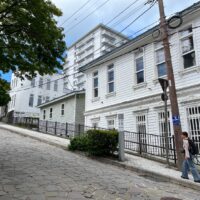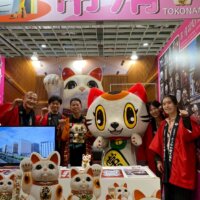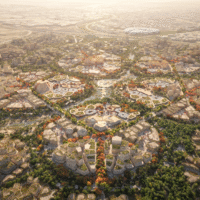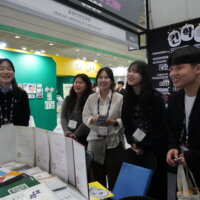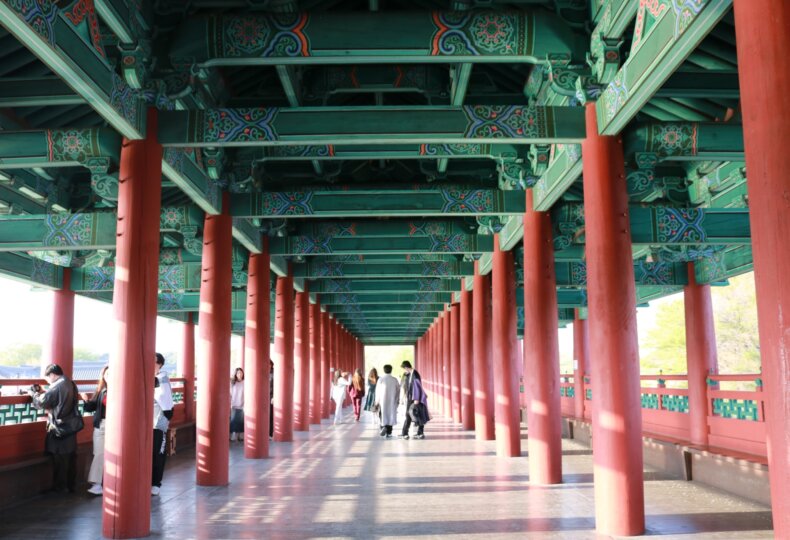
[Report] APEC 2025 Will Be Staged in Korea’s Ancient Capital, Gyeongju — An Easy Day Trip About 30 Minutes by KTX from Busan; What Kind of Place Is Gyeongju, and Why It’s Worth a Visit for Business Travelers
When people in Japan hear “ancient capital,” they may think of Kyoto, Nara, Kamakura, or Kanazawa. In Korea, Gyeongju, Kaesong, and Buyeo are renowned ancient capitals. Unlike Japan, each of these cities served as the capital of a different dynasty. From Busan, Korea’s high-speed KTX takes only about 30–40 minutes one way; in no time, you arrive in Gyeongju (慶州), Korea’s foremost ancient capital. In this day-trip report, we explain what Gyeongju is like and why it’s worth a visit for business professionals.
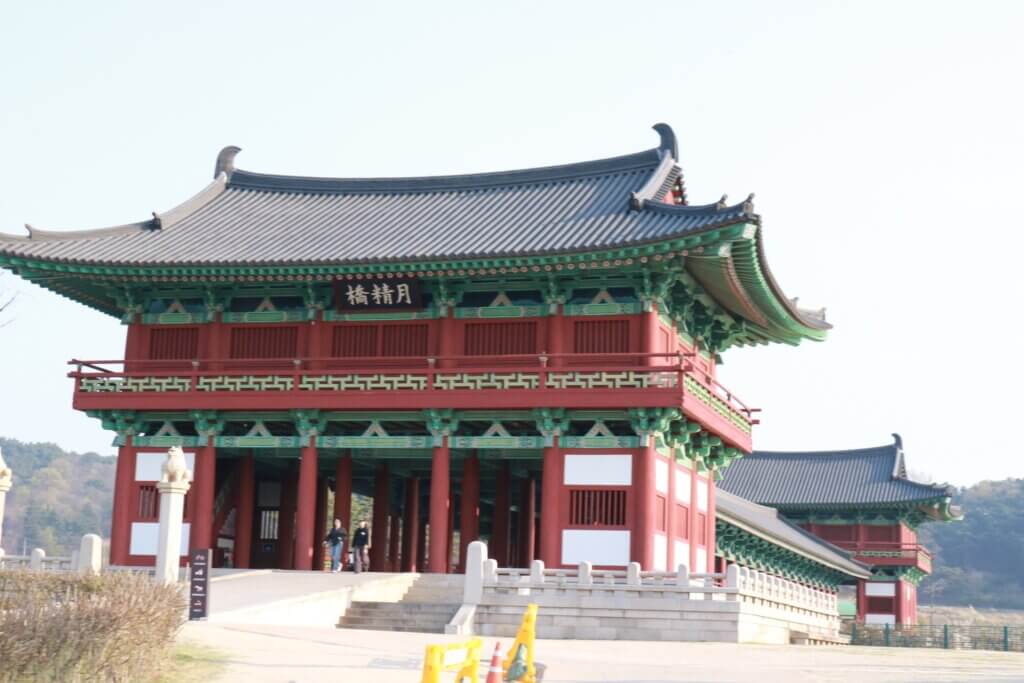
Gyeongju: Long Prosperity as the Capital of Unified Silla on the Korean Peninsula
Located in southeastern Korea, Gyeongju (キョンジュ) today has a population of about 250,000. As the capital of the ancient Silla dynasty, it flourished for roughly 1,000 years and is a historic city where numerous tumuli and Buddhist sites remain. For Koreans, it is more than a sightseeing destination; it is a “spiritual hometown” that evokes national roots and identity. World Heritage properties such as Bulguksa Temple and the Seokguram Grotto continue to convey the origins of Korean culture. Long beloved as a classic destination for school trips, many people cherish childhood memories of visiting Gyeongju. Often compared to Kyoto in Japan, its tranquil streetscapes and classical beauty are being rediscovered as a soothing place for modern visitors. Seeking history, pride, and quiet time, many Koreans continue to come here.
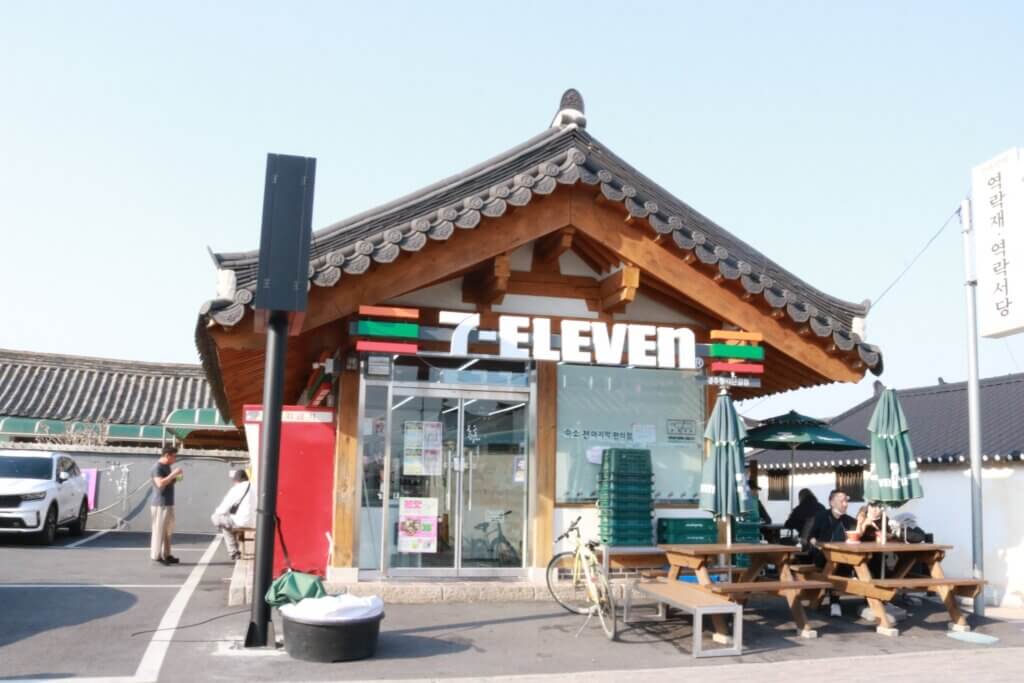
Japan and Silla—and Gyeongju—also share historical connections. Although relations were sometimes adversarial, there were extensive exchanges in religion, culture, and technology, and many influences are said to have crossed to Japan.
In recent years, stay-type tourism that leverages history, culture, and tranquility—as well as regional branding that embraces retro culture—has drawn attention, and visitor numbers from home and abroad are trending upward. As a rare area where Korean tradition and modernity blend, Gyeongju holds significant potential for new business development in cultural industries, tourism development, and regional revitalization.
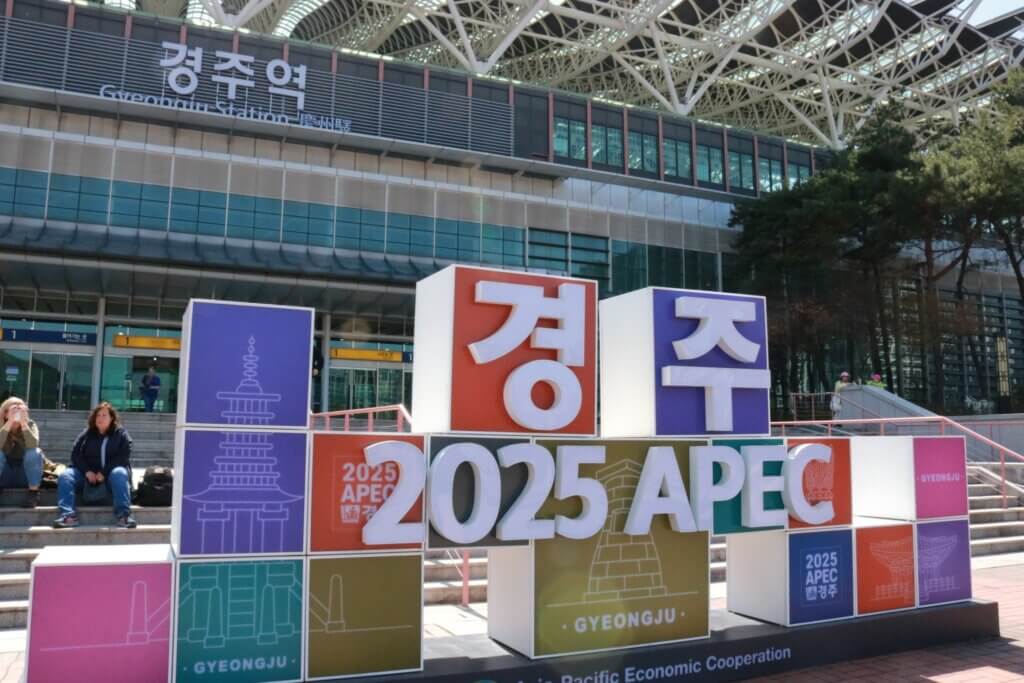
Chosen as the Stage for APEC 2025: Korea’s First Host Year Since Busan 2005
As officially decided by the Korean government in June 2024, Gyeongju will host the APEC Leaders’ Meeting in 2025. It will be Korea’s first chair year in 20 years since the 2005 meetings in Busan, with the main venue designated as the Hwabaek International Convention Center (HICO). This offers an excellent opportunity to showcase to the world a MICE model that fuses culture and innovation. Receptions and cultural programs leveraging UNESCO World Heritage sites are planned, with substantial spillover effects expected for the regional economy. The excellent access—about 30 minutes by KTX from Busan—will improve mobility for delegations and business visitors alike and is expected to energize side events and corporate networking.
APEC2025 KOREA https://apec2025.kr/kor/
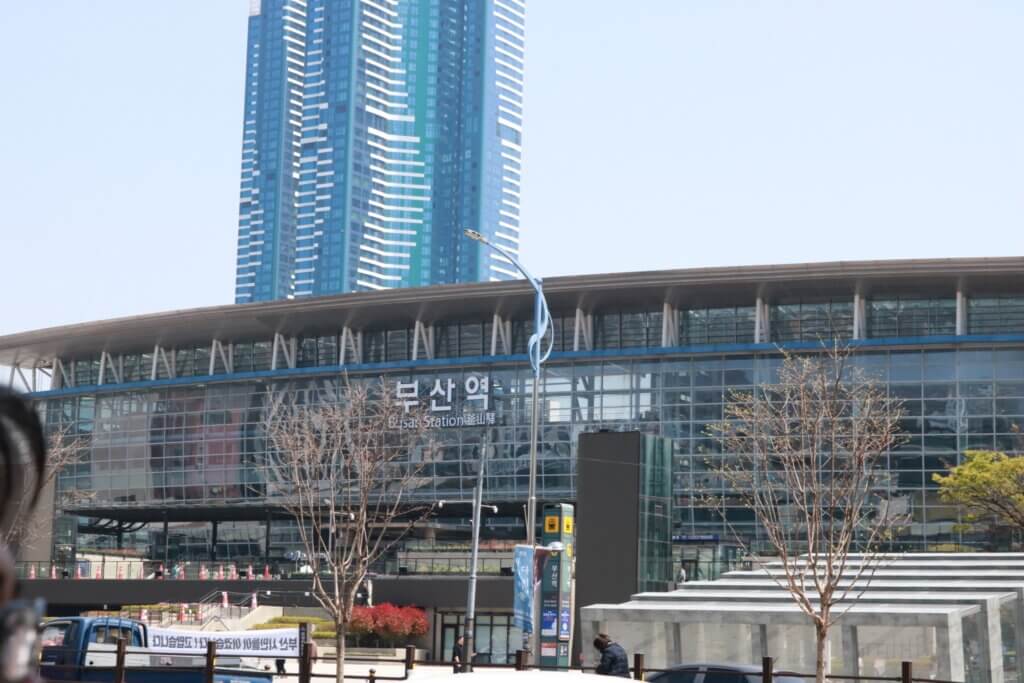
From Busan Station by KTX: In No Time, You’re in Gyeongju
Busan is a major transportation hub, with Busan Station serving as its central terminal. The station building is impressive—almost like an airport—and was constructed in 2004 to coincide with the opening of the KTX Gyeongbu Line.
KTX (Korea Train Express) is Korea’s flagship high-speed rail, with trains running at around 300 km/h. Service began in 2004, linking Seoul with major cities such as Busan, Gwangju, Gyeongju, and Daegu in short travel times. The system resembles Japan’s Shinkansen. All seats are reserved, with comfortable seating, Wi-Fi, and power outlets; the Seoul–Busan run takes about 2 hours 30 minutes at its fastest. KTX is operated by KORAIL (Korea Railroad, Korea Railroad Corporation).
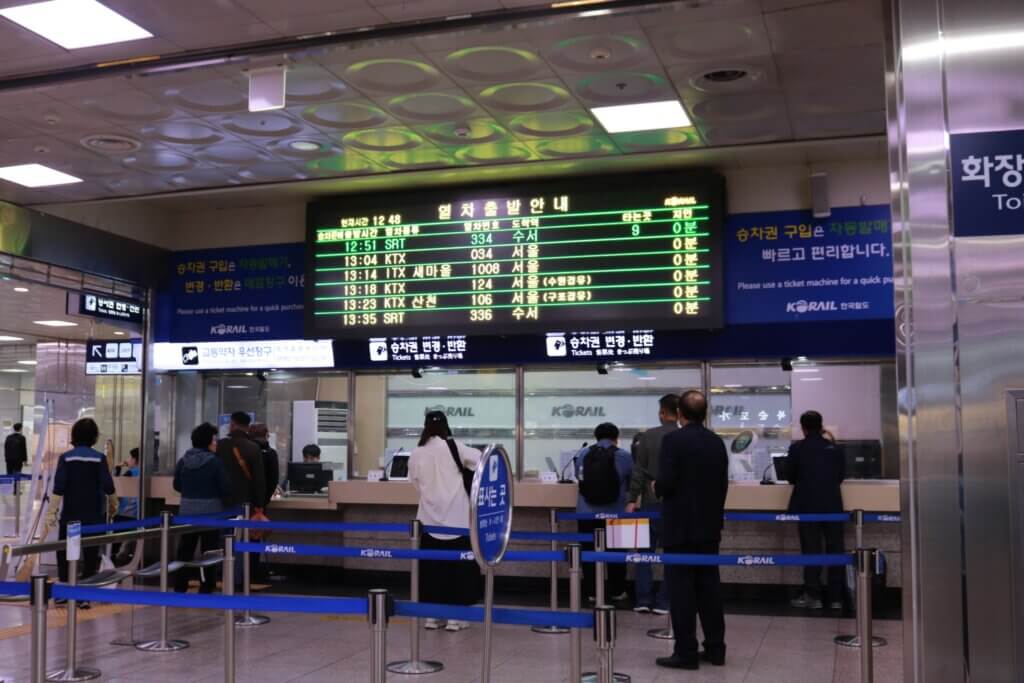
From Busan Station, the fastest KTX service gets you to Singyeongju Station in about 27 minutes. Even after morning meetings, you can comfortably be back in time for evening networking. There are many tunnels, so you won’t see much scenery, but the speed more than compensates. Tickets can be purchased online without much difficulty, and you can select your seat. Seating is divided into Economy and Premium (roughly equivalent to Japan’s Green Car), and the price may surprise you: Economy is KRW 11,000—just over JPY 1,000.
If you’ll be riding trains for several days, consider the KORAIL PASS, a discounted pass for foreign visitors that offers unlimited rides—including KTX—during the validity period.
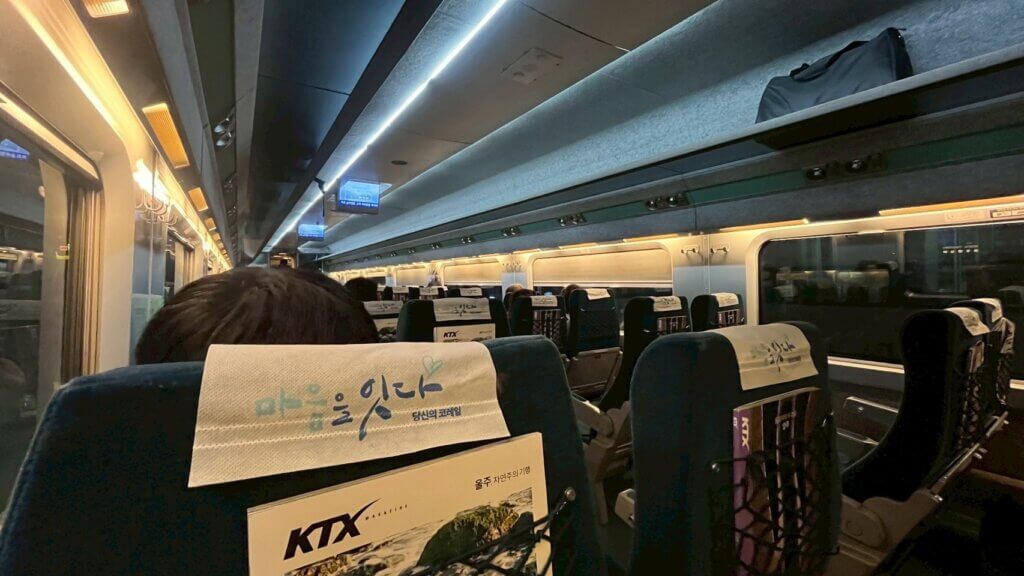
Boarding KTX is relatively straightforward. Check the platform number on the large electronic departure board and head to your platform. There are no ticket gates; it’s an open proof-of-payment system. Find your train and take your seat. Tickets may be inspected onboard, so make sure you’re on the correct service. Japanese announcements are made on board, which helps travelers from Japan ride with confidence. Free Wi-Fi is available in many Korean trains and stations, so working while in transit is easy.
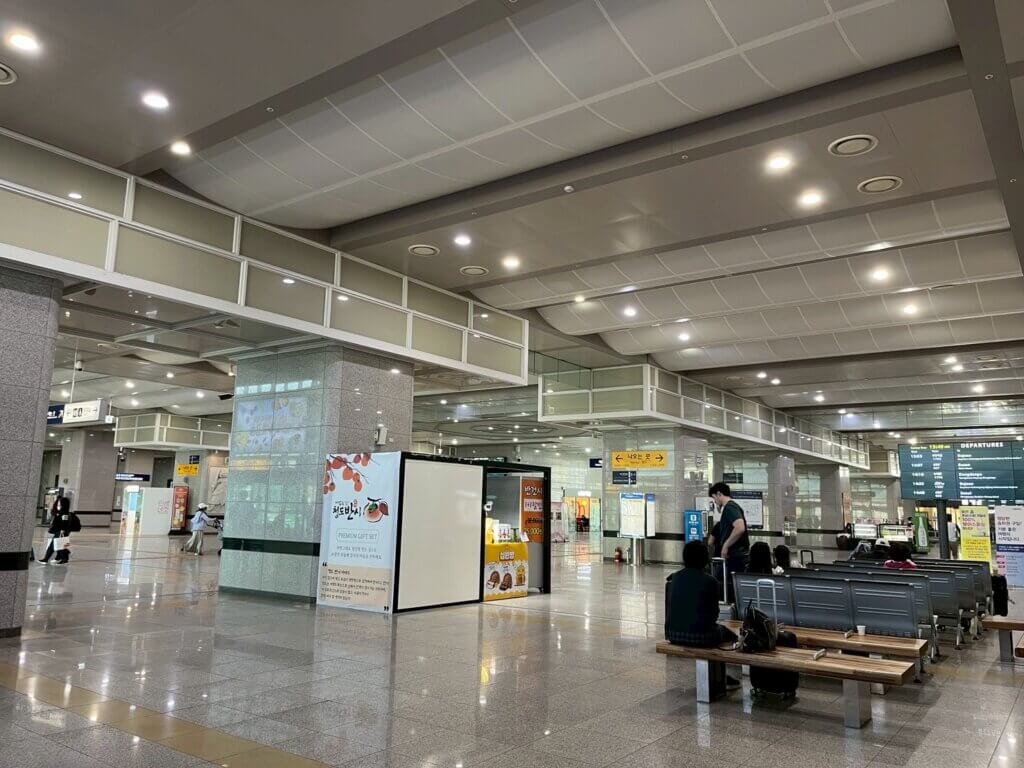
From Gyeongju Station, Sights Are a Bit Far — Buses Are Convenient for Getting Closer to the Center
If you arrive by KTX, there is some distance to the main sightseeing area. A taxi takes about 15 minutes and costs roughly JPY 1,500. Taking a bus will drop you relatively close to the central area. The ride is longer than a taxi, but buses are more economical and a practical option.

About Three Hours on Foot for the Main Spots; For a Leisurely Pace, Stay One Night
Most major sights are clustered within walking distance of each other. If your goal is to hit the highlights and take in the atmosphere, a day trip is plenty. If you want to slow down and enjoy some quiet away from big-city bustle, a one-night, two-day itinerary can be wonderful. Beyond distinctive lodging options, the dining scene is strong, so overall satisfaction tends to be high.

I compared Gyeongju to “Korea’s Kyoto,” but it also evokes Nara and Asuka for me (I was born and raised in Kyoto and visit Nara often). The sky feels wide; greenery and flowers are everywhere. Waves of tiled roofs remind you this was once an ancient capital. That atmosphere, in particular, calls Nara and Asuka to mind.
From Busan: A Half-Day, Afternoon Day Trip — Sample Gyeongju Itinerary
Here is the actual route we took when departing Busan in the afternoon. Gyeongju flourished as the capital of Silla for about 1,000 years, from 57 BCE to 935 CE—comparable in duration to Kyoto. After Silla unified the Three Kingdoms in the 7th century, the city prospered even more. The sightseeing area is extensive, so it’s difficult to cover everything in a single day. By narrowing the scope, you can plan a relaxed visit. This time we focused on the Daereungwon area.
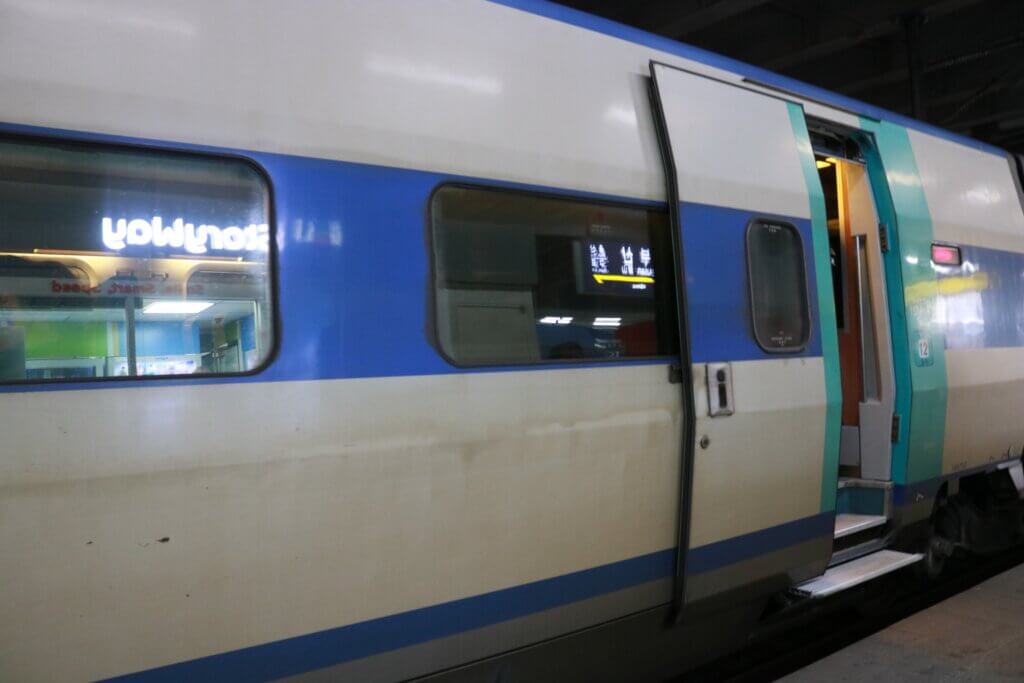
1:08 p.m. — Depart Busan by KTX
In about 30 minutes you arrive in Gyeongju. The station building, completed in 2010, is large and impressive. The interior functions as a spacious waiting hall with conveniences like a minimarket, making for a comfortable stop.
2:00–6:00 p.m. — Stroll the Daereungwon Area
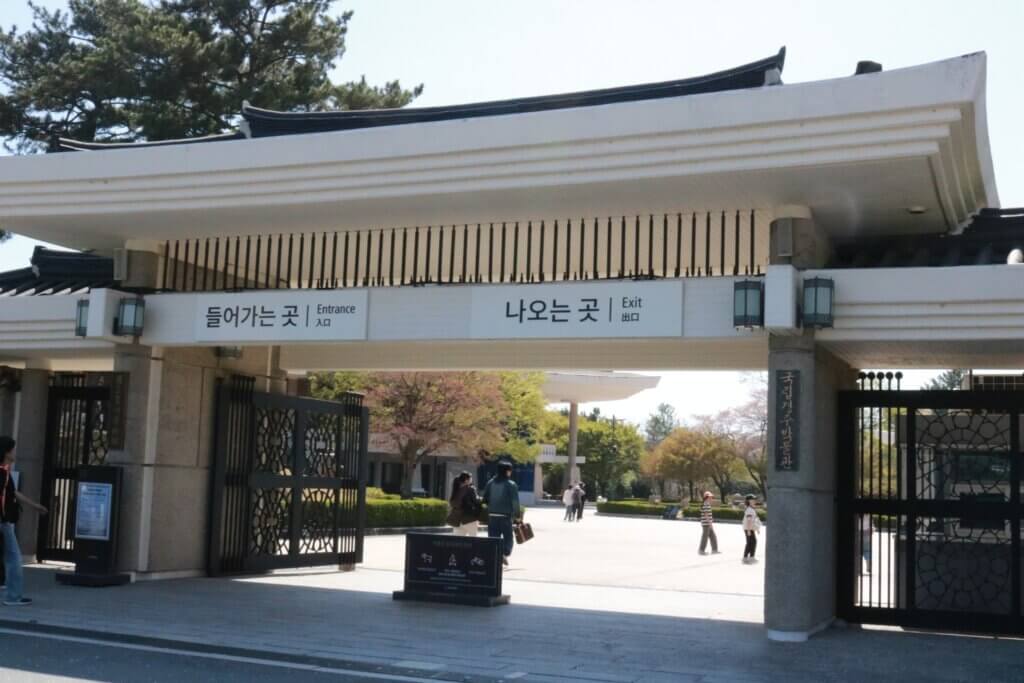
Take a taxi to the National Gyeongju Museum and stroll the surroundings at an easy pace. The museum is also slated to serve as one of the venues during APEC.
Donggung Palace and Wolji Pond (formerly Anapji)
The East Palace constructed in 679.
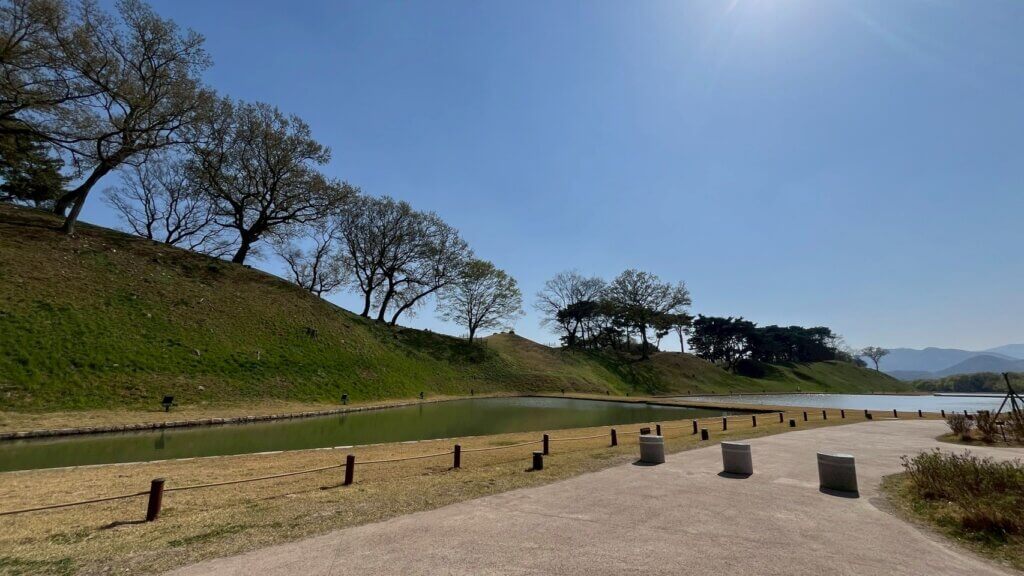
Wolseong Palace Site
This was the royal palace district of Silla. Today, portions such as the moat remain, and we also observed sections under archaeological excavation.
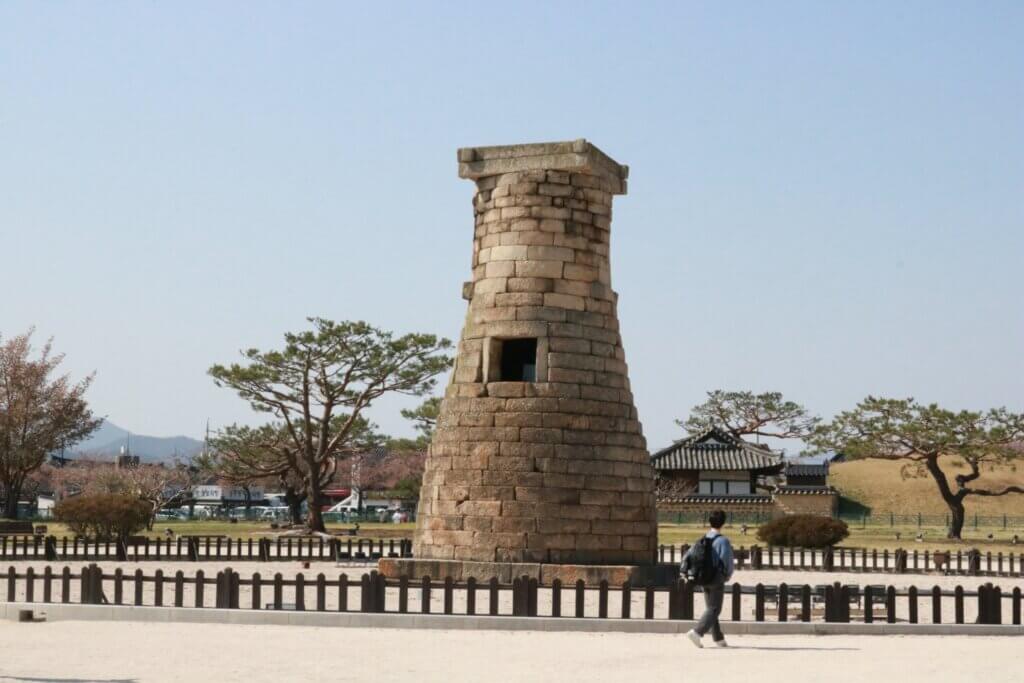
Cheomseongdae Observatory
A small, tower-like structure believed to have been used for astronomical observation. Its unusual form fires the imagination.
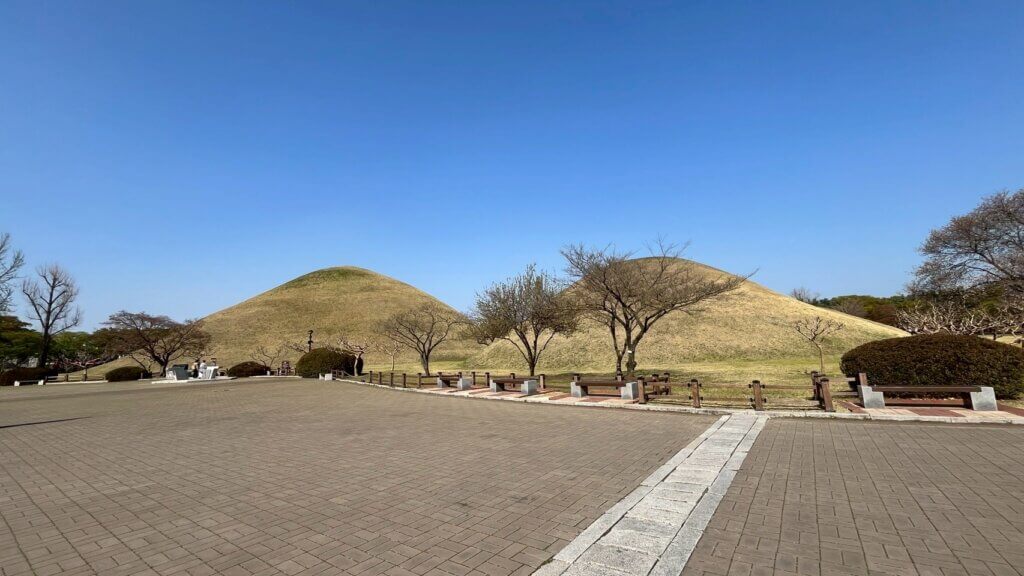
Daereungwon Ancient Tombs
A cluster of 23 tumuli. The largest, Hwangnamdaechong Tomb, is distinctive for its double-gourd shape formed by two joined mounds.
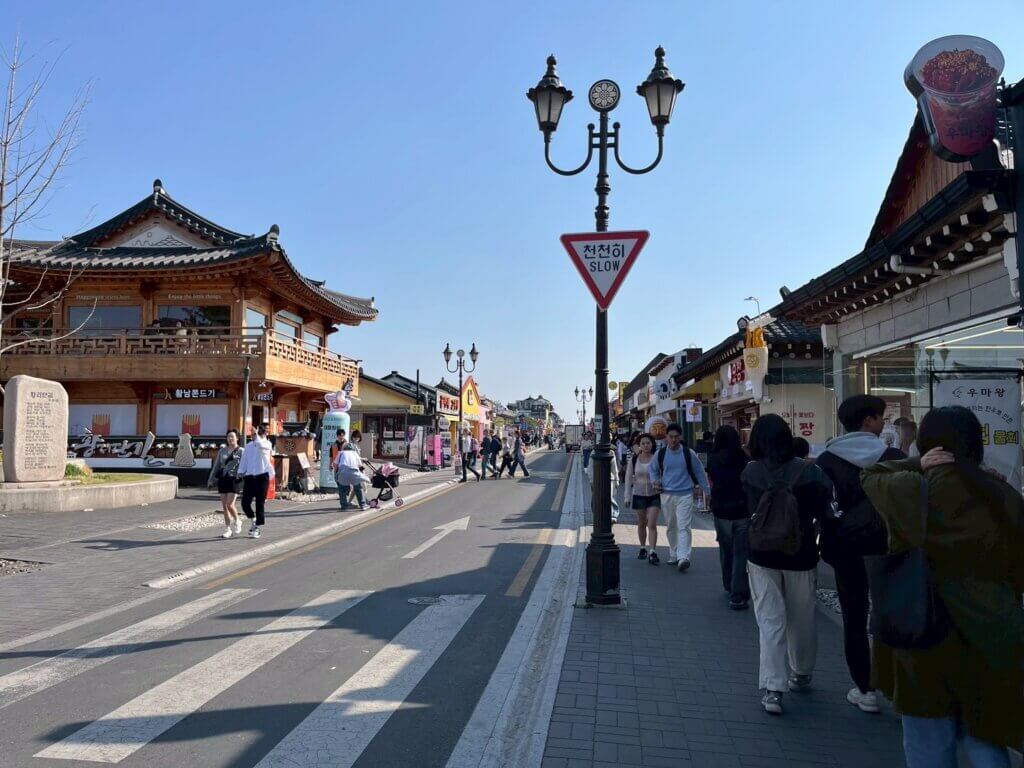
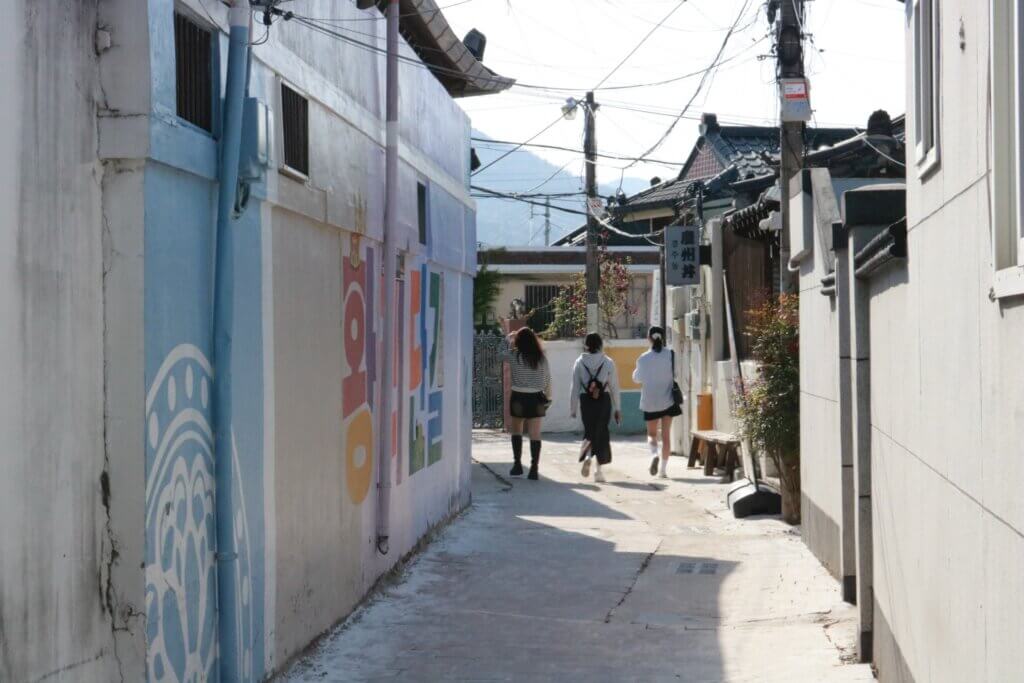
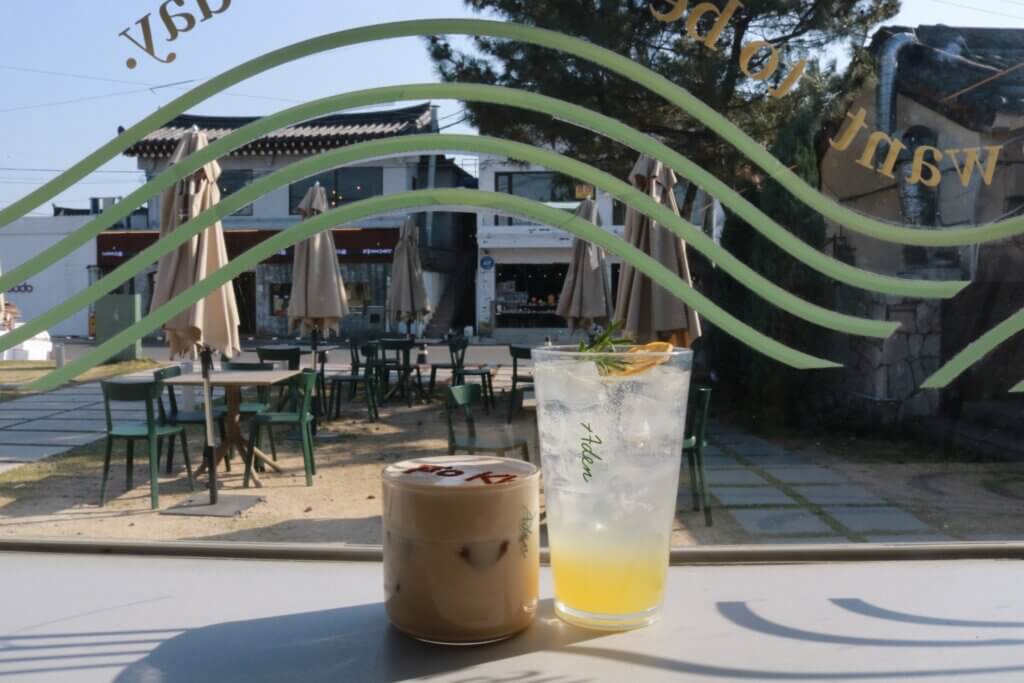
Café Break
A lively tourist scene unfolds with eateries and souvenir shops lining the street. Many cafés have such a pleasant atmosphere that it’s hard to choose.
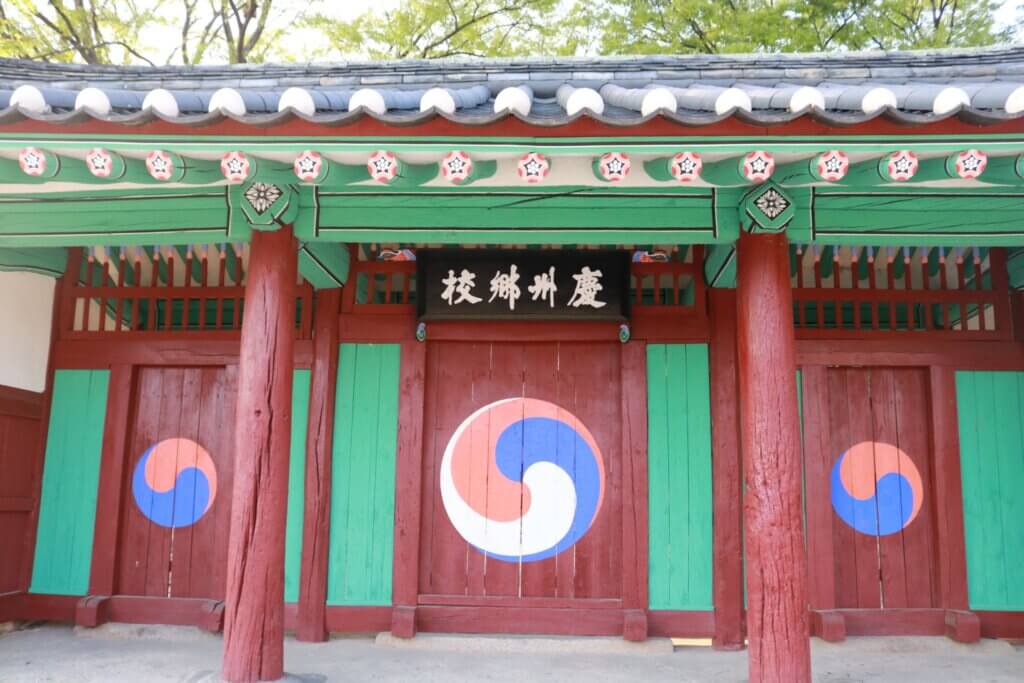
Gyochon Hanok Village and Gyeongju Hyanggyo
Gyochon Hanok Village features beautiful streetscapes of traditional homes with tiled roofs and earthen or stone walls. There are many cultural-experience facilities and restaurants. At the very back of the village stands Gyeongju Hyanggyo, regarded as Korea’s oldest type of higher-learning institution.
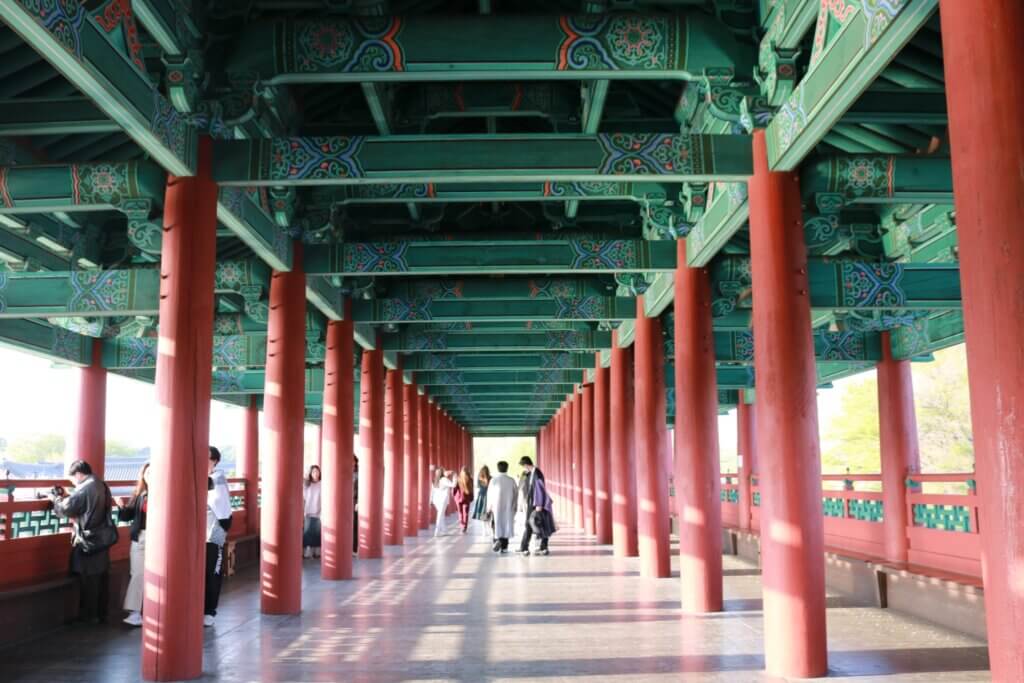
Woljeonggyo Bridge
Built in 760, the bridge was once lost. Research progressed in the 20th century, and it was officially completed in 2018 as a wooden structure. Because few historical records survive, aspects of the bridge and pavilions were debated during reconstruction. It is now open to the public, and its nighttime illumination is beautiful to see.
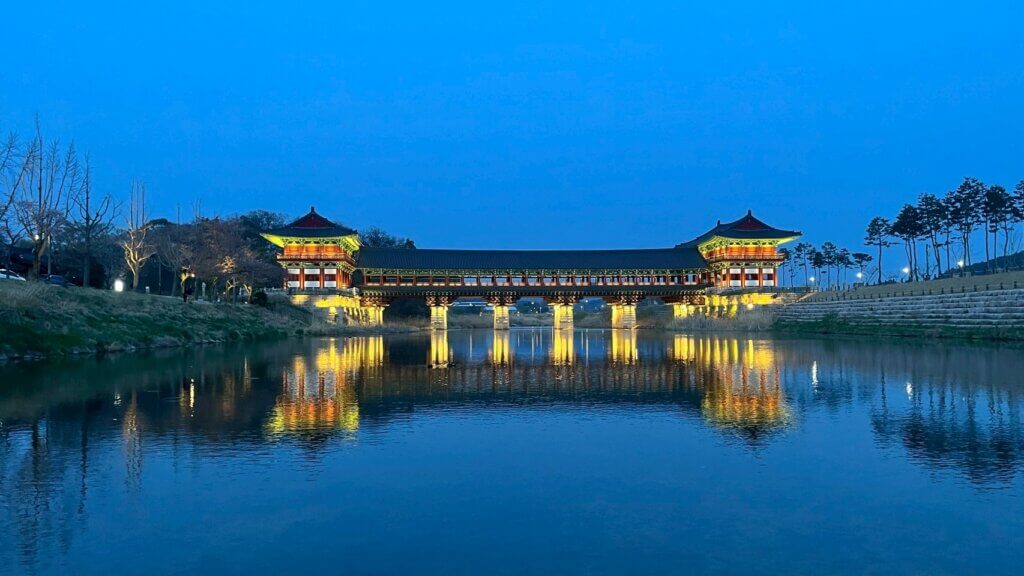
Ethereal when lit up at night
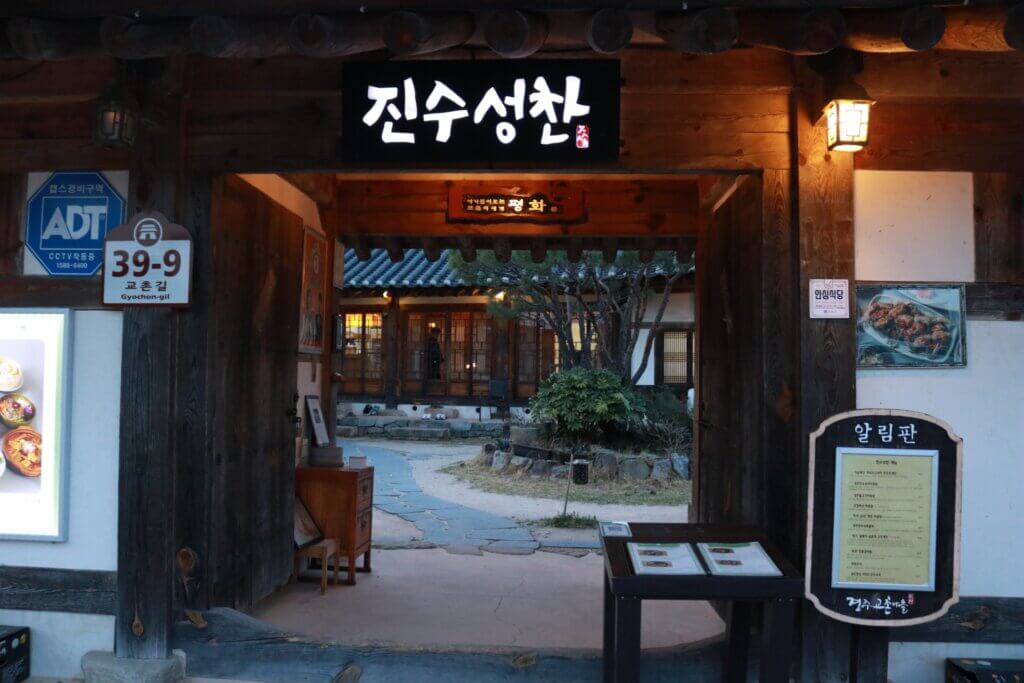
6:30 p.m. — Dinner
We had dinner in Gyochon Hanok Village. It was quiet and calming—a side of Korea very different from the big-city bustle of Busan. Afterwards, we caught a KTX train in the 8 p.m. hour back to Busan.
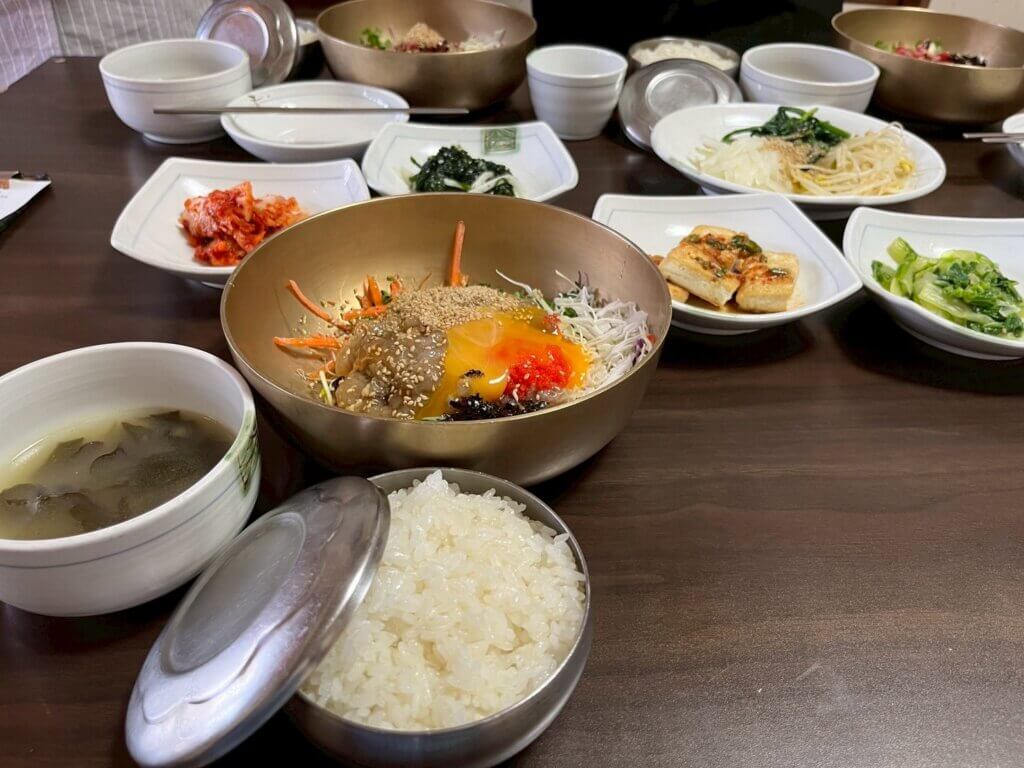
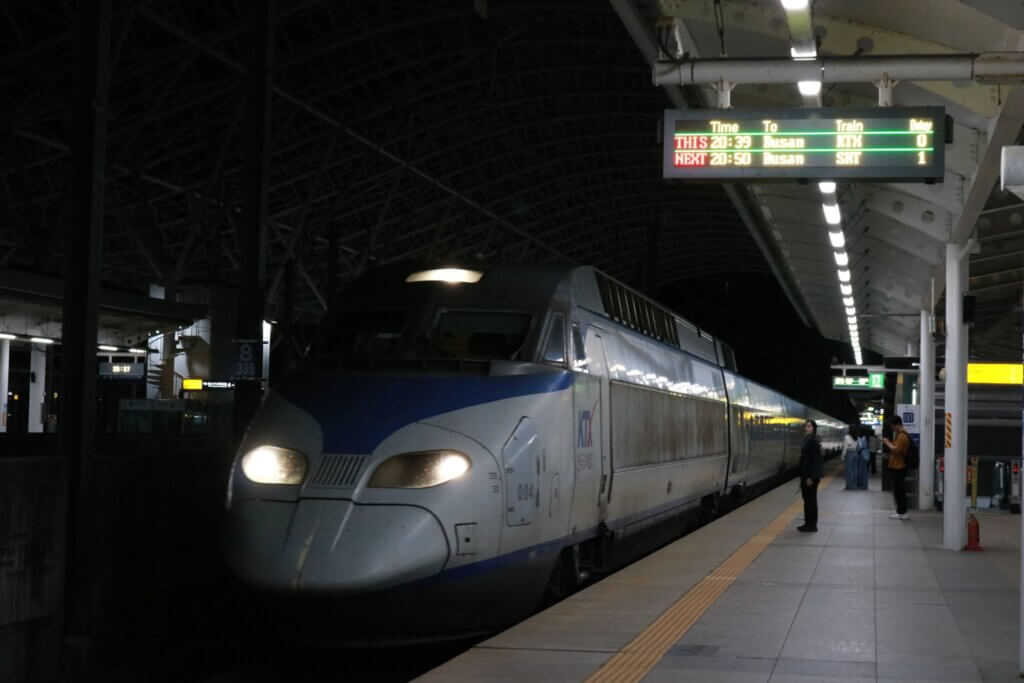
Arrive in Busan
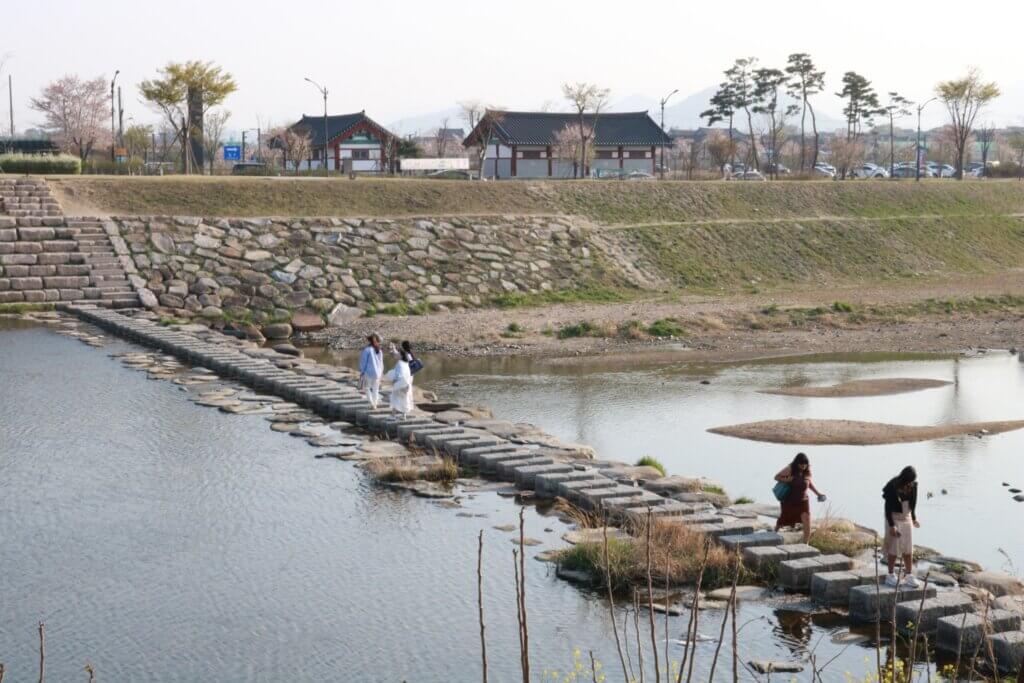
Gyeongju, a City of World Heritage—A Must-Visit for Business Travelers
Gyeongju boasts more UNESCO World Heritage Sites than any other city in Korea, with Bulguksa Temple—inscribed in 1995 as the country’s first—standing as an emblem. Just 30 minutes by KTX from Busan, it offers a timeless atmosphere distinct from Busan, and that contrast only heightens its appeal. In 2025, the APEC Leaders’ Meeting will be held here, drawing global attention to its potential as a MICE hub. Infrastructure—from convention facilities to connectivity—is accelerating, making Gyeongju a valuable benchmark for planners.
The nostalgia of this thousand-year royal capital evokes a curious sense of familiarity and distant memory for many visitors from Japan. Whether as a short trip between meetings, a quiet workation, or an incentive travel destination, Gyeongju promises singular experiences across scenarios. Consider adding it to your upcoming business itineraries or workation plans.
-
[On-site Report] The Near-Future Face of MICE and Events Found On-Site at IVS2025 / Introducing What Was Actually Used at IVS and the MICE- and Event-Oriented Services Showcased by Exhibiting Startups
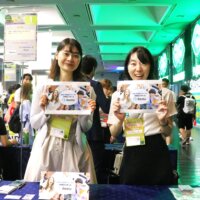
-
[On-Site Report] Hakodate, Hokkaido Is One of Japan’s Top Cities for Workations: An In-Depth, Hands-On Look at Workation and Coworking Options
